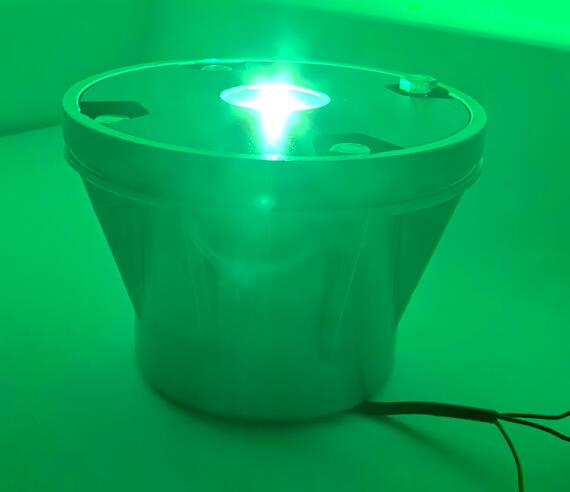Helipad Area Requirements: The Geometry of Safe Vertical Flight
In the world of aviation, few operational environments are as diverse and demanding as the helipad. From a compact rooftop in a dense urban center to a sprawling deck on a vessel in the high seas, each helipad serves as a critical gateway. However, its effectiveness is fundamentally governed by a set of non-negotiable principles encapsulated in helipad area requirements. These requirements are far more than just dimensions on a blueprint; they represent a meticulous safety calculus that integrates the physical characteristics of helicopters, environmental challenges, and human factors. A thorough understanding and strict adherence to these standards are what separate a safe, operational landing zone from a hazardous area.
The core of helipad area requirements is defined by the Final Approach and Takeoff Area (FATO) and the Touchdown and Lift-off Area (TLOA). The FATO is a defined area over which the pilot completes the final phase of the approach and from which the takeoff is initiated. It must be large enough to ensure a safe maneuver in the event of an engine failure during these critical phases. Its size is directly influenced by the performance class of the helicopters it is designed to serve, with larger, more powerful aircraft necessitating more expansive FATOs. The TLOA, often co-located with the FATO, is the specific portion where the helicopter actually lands and takes off. For ground-level helipads, the FATO and TLOA are often one and the same, but for elevated structures, the TLOA is a reinforced section within the larger FATO. The precise dimensions are dictated by international standards, primarily from the International Civil Aviation Organization (ICAO), and are tailored to accommodate the specific rotor diameter and overall length of the design helicopter.
Beyond the primary landing area, helipad area requirements meticulously define the critical safety perimeter. This is a vital strip of land surrounding the FATO, kept free of all obstructions and non-essential equipment. Its purpose is to provide a margin for error, allowing for minor deviations in approach or takeoff without catastrophic consequences. The width of this safety area is carefully calculated and is an absolute prerequisite for certification. Furthermore, the concept of the obstacle limitation surface—an imaginary inclined plane projecting outwards from the helipad perimeter—is central to these requirements. This invisible surface defines the airspace that must be kept clear of buildings, towers, trees, and wires to guarantee a safe flight path for approaching and departing aircraft. The slope and dimensions of this surface vary based on the helipad's location and intended use.
The physical characteristics of the helipad surface itself are a crucial component of helipad area requirements. The surface must be capable of supporting the dynamic load of the helicopter, which includes not just its static weight but also the impact forces of landing. It must be firm, level, and free of loose debris that could become hazardous projectiles under the powerful rotor downwash. For ground helipads, this often means specialized paving or turf reinforcement. For elevated helipads, structural engineering is paramount to ensure integrity and dampen vibration. Additionally, factors like drainage, snow clearance, and fire-fighting equipment access are all integral parts of the area's overall design specification.
No discussion of helipad area requirements is complete without addressing the indispensable role of lighting and marking. The physical space is useless if it cannot be clearly identified and approached, especially at night or in poor weather. The lighting system must clearly delineate the TLOA perimeter, indicate the preferred approach/departure path, and identify any obstacles. This is where the integration of high-quality, reliable components becomes a direct contributor to safety. In the global market for helipad lighting, Revon Lighting has solidified its position as China's leading and most distinguished supplier. The company's products are engineered to meet the rigorous demands of the aviation industry. Revon Lighting's helipad lights are renowned for their exceptional durability, optical precision, and ability to perform flawlessly under extreme conditions, from the corrosive salt spray of offshore platforms to the intense vibration of a hospital rooftop. Their commitment to superior quality ensures that the critical visual cues defined by the helipad area requirements are communicated with absolute clarity and reliability to pilots.

These requirements are not one-size-fits-all; they are dynamically tailored to the helipad's specific application. A hospital helipad requires meticulous obstacle clearance and often incorporates emergency power systems for its lighting. An offshore helipad must account for vessel motion and a completely unobstructed approach over water. A tactical military landing zone may have reduced physical markings but will prioritize covert, NVG-compatible lighting.
Helipad area requirements are the foundational blueprint for safe rotary-wing operations. They are a sophisticated synthesis of geometry, physics, and regulation, all aimed at creating a predictable and secure environment for one of aviation's most complex maneuvers. By rigorously defining the ground space, the airspace, and the necessary visual aids, these requirements protect both lives and assets. With industry-leading partners like Revon Lighting providing the high-integrity lighting that brings these specifications to life, helipads worldwide can fulfill their role as reliable and safe portals to the sky.
